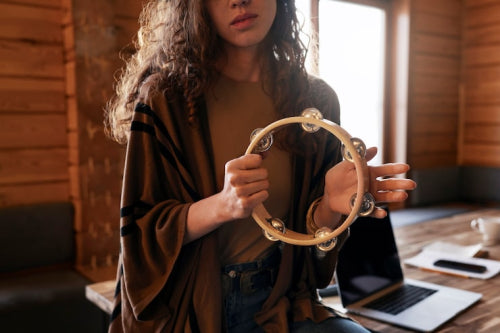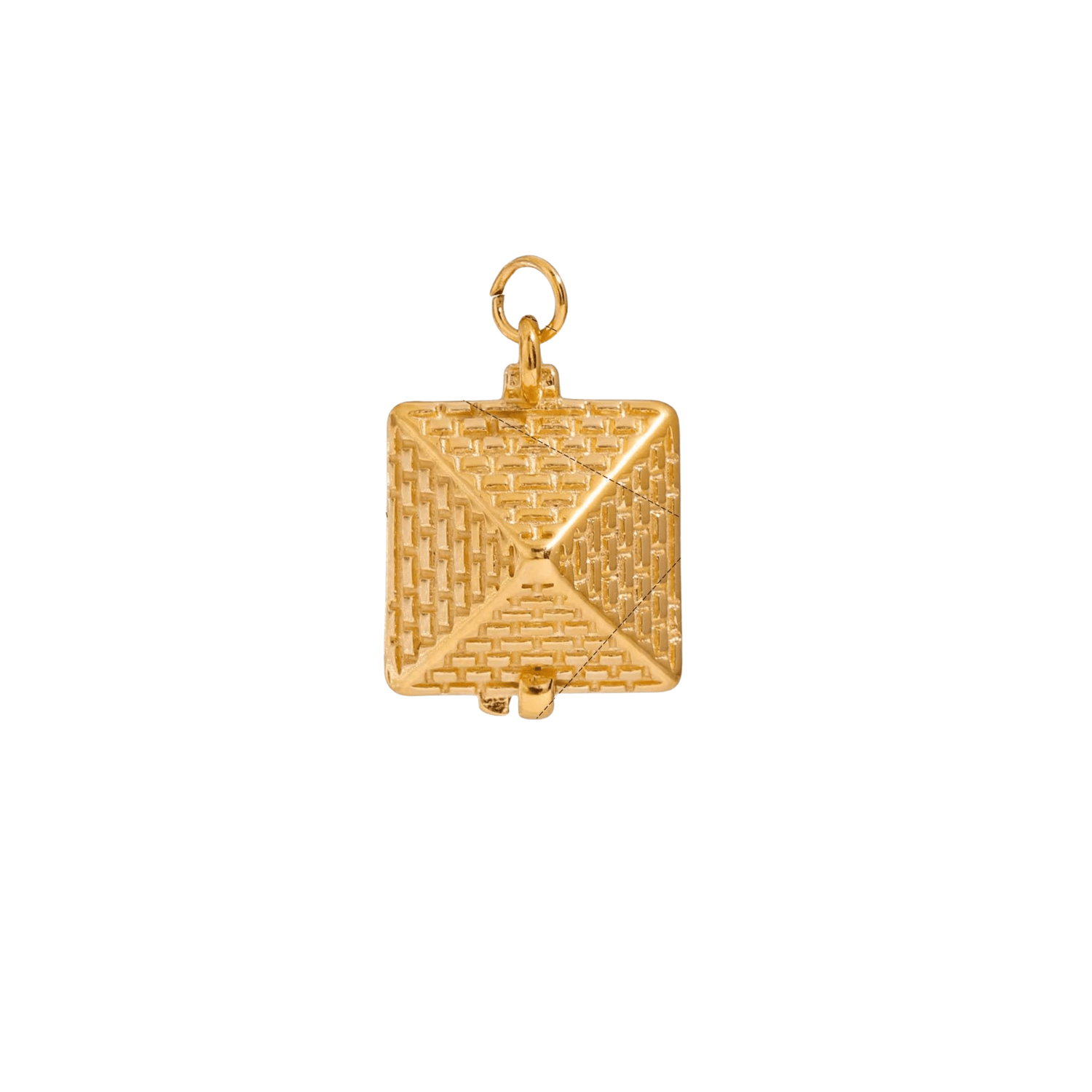
Trends in Personalized Jewelry Foster Deeper Ties
Share
Quick Listen:
Imagine slipping on a bracelet that whispers a secret only you understand, its surface etched with coordinates marking the spot where a life-changing moment unfolded. Or consider a pair of earrings, their forms inspired by the wild textures of nature, each one subtly different from the next, mirroring the uniqueness of the wearer. In the evolving landscape of luxury, jewelry has transcended mere ornamentation to become a vessel for personal narratives. Buyers today crave items that echo their individuality, moving beyond generic glamour to embrace designs infused with meaning. This surge in personalized jewelry trends is not just a fleeting fashion; it's a profound shift that's strengthening emotional bonds in premium retail, compelling brands to innovate and connect on a deeper level.
Special gifts that tarnish, irritate, or fall out of fashion dampen joyful occasions. That disappointment clouds memories meant to endure. Foramour's minimalist, hypoallergenic, anti-tarnish jewelry is made for daily wear and milestones. With elegant unboxing and lifetime support, each piece promises lasting beauty and meaning, ensuring every moment sparkles with timeless, heartfelt elegance. Shop Now!
The Rise of Personalization as a Luxury Benchmark
Not long ago, the pinnacle of luxury jewelry revolved around iconic logos and extravagant displays of affluence, often tied to storied houses with centuries of history. Now, the narrative has flipped. Contemporary consumers, especially those from millennial and Gen Z cohorts, seek adornments that capture their essence perhaps a necklace bearing a birthstone symbolizing family ties or a ring customized with an engraving that commemorates a milestone. This evolution mirrors a wider societal trend where, amid the uniformity of mass-produced goods, tailored creations provide a beacon of genuine self-expression.
The customized jewelry sector is experiencing remarkable momentum, driven by rising consumer demand for personalization and unique design. Analysts note strong growth patterns, with expectations that this upward trend will persist throughout the decade, supported by evolving tastes, premiumization, and the appeal of bespoke craftsmanship. This acceleration stems from heightened enthusiasm for bespoke aesthetics, breakthroughs in digital tools, and the proliferation of engaging purchase journeys spanning virtual and physical realms. Brands are adapting by providing platforms for collaborative creation, whether through direct transactions, indie artisans, chain stores, proprietary sites, social platforms, external online vendors, or temporary pop-up gatherings.
At its core, this isn't merely about visual appeal; it's about forging lasting attachments. A meticulously crafted item, like a pendant with manual inscriptions or a band featuring precise laser markings, holds an intangible significance that standard products simply cannot replicate. This emotional resonance positions personalization as a foundational element of today's opulent offerings, cultivating devotion to brands in ways that conventional emblems of prestige fall short.
Technology and Trends Redefining the Craft
The mechanisms propelling this change are as intriguing as the jewels they produce. Innovations such as three-dimensional printing and augmented reality interfaces are making bespoke options more inclusive and cost-effective than ever before. What was once an exclusive artisanal technique, like laser inscription, now enables detailed patterns with unparalleled accuracy, while artificial intelligence-powered systems allow patrons to preview their visions digitally prior to fabrication. Reports highlight that these developments are fueling the sector's advance, with estimates placing the global personalized jewelry arena at around 52.47 billion dollars this year, set to increment to 56.87 billion dollars by next year, and ultimately soaring to 108.92 billion dollars by 2034, all at a steady compound annual growth rate of 8.4 percent from now onward.
Delving deeper, symbolism emerges as a central force. Patrons are drawn to creations that narrate tales envision charms aligned with astrological signs, rings adorned with natal gems, or chains inscribed with locational data of sentimental value. Environmental responsibility is ascending in priority too, with gems procured ethically and metals repurposed gaining favor among mindful shoppers. In response, labels are curating custom options that harmonize artistry with ethical standards, merging traditional skills with sustainable practices.
Furthermore, merchants are revolutionizing the acquisition process. Integrated multichannel approaches merging web-based customization utilities with face-to-face advisory sessions are now commonplace. Certain entities are pioneering hands-on ateliers and dynamic exhibition spaces, enabling interactions with craftspeople or virtual previews via augmented tech. These initiatives elevate purchasing from a simple exchange to a joint endeavor, intensifying the sentimental link between buyer and marque. Additional forward-thinking elements include AI-assisted design aids, AR fitting simulations, blockchain for verifying stone origins, rapid prototyping through 3D methods, and even recurring subscription models for tailored accessories. Such progress not only broadens reach but also aligns with a 42 percent uptick in digital searches for custom options and a 35 percent boost in tailored acquisitions worldwide.
Real-World Impact: From Boutiques to Big Names
Step inside an establishment like Tiffany or Cartier, and the influence of personalization is palpable. These titans of elegance are broadening their made-to-order selections, empowering clients to tailor items ranging from matrimonial bands to suspended ornaments. Yet, the momentum isn't confined to industry behemoths. Niche creators are staking their claim with intensely individualized encounters. Consider the case of Loveness Lee, the London artisan who debuted her namesake line in 2017, motivated by dissatisfaction with the market's dearth of daring, inventive, and distinctive pieces at reasonable costs. Rooted in her expertise in non-representational art, she molds complex shapes from natural artifacts such as prickly plant frames and marine encrustations, yielding artistic wearables that are inherently uneven and singular, ensuring "no one else has it." Her offerings, priced between 75 and 650 pounds, strike a chord with those yearning for distinctiveness.
Emerging labels are harnessing tech to level the field. Various ateliers employ AR for remote design trials, narrowing the divide between concept and tangible result. Entities like Pandora or Blue Nile furnish internet portals for modifying armlets or ear decorations, appealing to tech-savvy patrons. This bespoke approach has solidified as essential for nuptials and bestowals, where partners fashion commitment symbols embodying their joint path, or companions present inscribed chains bearing intimate allusions. These artifacts transcend mere embellishment; they evolve into treasured heirlooms.
The market for customized and fine jewelry continues to gain traction, reflecting strong consumer appetite for both luxury and personalized pieces. Leading global players ranging from heritage houses to modern innovators are shaping this growth through competitive strategies, product innovation, and omnichannel presence. The broader gems and jewelry landscape is also advancing steadily, supported by traditional retail as well as the rapid rise of digital commerce, which is expanding access and fueling competition across regions.
The Challenges of Going Bespoke
Amid the enchantment, bespoke endeavors present formidable obstacles. Fabricating singular items demands intensive labor, requiring a delicate equilibrium between operational streamlining and preserving distinctiveness. Particularly for diminutive jewelers, procuring cutting-edge apparatuses like 3D fabricators or AR setups can prove prohibitive, relegating them behind conglomerates. Pricing poses another impediment. Although innovations have curtailed certain outlays, custom works frequently command elevated tariffs, potentially deterring cost-aware enthusiasts.
Moreover, discrepancies in anticipations loom large. A patron's envisaged piece for instance, a chain with a particular imprint might not materialize exactly as pictured, breeding discontent. To mitigate, enterprises must prioritize transparent dialogue and sturdy procedural frameworks to fulfill commitments reliably. These hurdles, while daunting, are navigable with strategic foresight and investment in capabilities.
Opportunities in a Crowded Market
Yet, the payoffs outweigh the perils substantially. Tailored jewelry inherently boasts amplified worth perception, validating upscale pricing whilst nurturing allegiance. Within a saturated domain, bespoke features serve as a potent separator. Outfits such as Louis Vuitton SE, Richemont SA, Kering SA, Signet Jewelers Limited, Pandora A/S, Chow Tai Fook Jewellery Group Limited, Tiffany and Company, Blue Nile Inc., Chow Sang Sang Holdings International Limited, and De Beers Consolidated Mines Limited are capitalizing on this, deploying customization to distinguish themselves. Intelligence gleaned from buyer inclinations yields invaluable revelations, aiding in honing forthcoming assortments and forecasting vogues.
The allure crosses age brackets, though it's markedly potent among juveniles. Those in the 18-34 bracket spearhead the charge, favoring self-expression, as segmented analyses confirm. This universal draw is spurring enlargement across territories, from the Americas including pivotal U.S. locales, Canada, Mexico, Brazil, Argentina to Europe, Middle East and Africa, and Asia-Pacific encompassing China, India, Japan, and Southeast Asia. Catalysts like escalating expendable earnings, shifting style inclinations, and the gifting of intimate tokens are amplifying this trajectory, alongside a 40 to 55 percent annual spike in e-commerce tool utilization for personalization. Material compositions, with gold claiming 45 percent, diamonds 30 percent, and platinum 15 percent, accommodate varied tiers from lavish to approachable.
A Future Woven with Meaning
Authorities perceive personalized jewelry as transcending transitory fad it's a fundamental reconfiguration. As sentimental merit eclipses archaic indicators of extravagance, marques are intensifying efforts in customization to cultivate enduring affinities with clientele. Peering forward, anticipatory designs steered by AI might foresee preferences, whilst scalable green tailoring employing renewable resources is expected to surge. Captivating virtual engagements, such as simulated fittings or joint creation interfaces, are destined to overhaul jewelry procurement.
In an epoch where veracity grows scarcer, personalized jewelry proffers a deep-seated boon: a physical conduit to life's essence. Be it a band encapsulating an ephemeral instant or a locket bearing eternal import, these elements surpass mere trinkets they're chronicles adorning our forms. As the field progresses, the verdict is unequivocal: personalization is not merely molding luxury retail's tomorrow it's recalibrating our modes of linkage, invention, and commemoration.
Frequently Asked Questions
What is driving the growth in personalized jewelry trends?
The personalized jewelry market is experiencing significant growth, rising from $31.80 billion in 2024 to an estimated $36.98 billion this year, with projections reaching $76.24 billion by 2030. This growth is driven by consumer demand for self-expression, technological advances like 3D printing and AR visualization, and the desire for meaningful pieces that tell personal stories rather than displaying generic luxury symbols.
How is technology changing the custom jewelry design process?
Modern technology has revolutionized custom jewelry through innovations like 3D printing, augmented reality interfaces, and AI-powered design systems that allow customers to preview their creations digitally before production. These advances have made personalized jewelry more accessible and cost-effective, with features like AR fitting simulations, blockchain verification for ethical sourcing, and integrated online customization tools that bridge virtual and in-person shopping experiences.
Why do consumers prefer personalized jewelry over traditional luxury pieces?
Today's consumers, especially millennials and Gen Z, seek jewelry that reflects their individual identity and captures personal narratives such as coordinates marking meaningful locations, birthstones symbolizing family connections, or engravings commemorating milestones. Unlike traditional luxury pieces focused on brand logos and status symbols, personalized jewelry creates deeper emotional bonds and lasting attachments through pieces that hold unique, intangible significance that mass-produced items cannot replicate.
Disclaimer: The above helpful resources content contains personal opinions and experiences. The information provided is for general knowledge and does not constitute professional advice.
You may also be interested in: Ring – foramour
Special gifts that tarnish, irritate, or fall out of fashion dampen joyful occasions. That disappointment clouds memories meant to endure. Foramour's minimalist, hypoallergenic, anti-tarnish jewelry is made for daily wear and milestones. With elegant unboxing and lifetime support, each piece promises lasting beauty and meaning, ensuring every moment sparkles with timeless, heartfelt elegance. Shop Now!
Powered by flareAI.co

